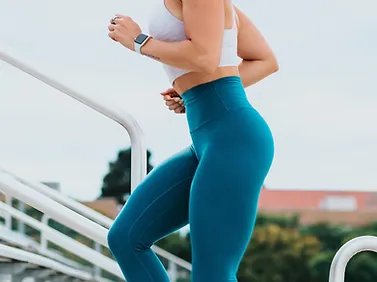Lower Crossed Syndrome
Injury Guide

Lower Crossed Syndrome is a common postural imbalance that can affect athletes and hinder their performance. It is characterized by a combination of tightness and weakness in specific muscles, leading to a distorted pelvic alignment. Recognizing the symptoms, understanding the causes, and implementing effective rehabilitation strategies are crucial for athletes seeking to overcome this condition and optimize their athletic abilities.
Symptoms:
Symptoms of Lower Crossed Syndrome typically include a forward tilt of the pelvis, an excessive arch in the lower back (known as lumbar lordosis), and a protruding abdomen. Athletes with this condition may experience lower back pain, hip discomfort, and decreased flexibility in the hips and hamstrings. Additionally, they may notice weakness in the deep abdominal muscles and glutes, while the hip flexors and lower back extensors become overly tight.
Anatomy:
Understanding the anatomy of Lower Crossed Syndrome and its implications on this disorder is crucial for athletes seeking to grasp the underlying mechanisms and optimize their rehabilitation. This knowledge provides valuable insight into the muscular imbalances and structural changes that occur within the body.
In Lower Crossed Syndrome, the imbalances primarily involve the muscles of the pelvic region and the lower back. The anterior muscles that become tight and overactive include the hip flexors, particularly the iliopsoas muscle, and the erector spinae group of muscles in the lower back. These muscles play a significant role in hip flexion and extension, respectively. When they become excessively tight, they contribute to the forward tilt of the pelvis and the exaggerated arch in the lower back.
On the other hand, the posterior muscles that become weak and inhibited in Lower Crossed Syndrome are the deep abdominal muscles, such as the transverse abdominis, and the gluteal muscles, particularly the gluteus maximus. The deep abdominal muscles provide core stability and support, while the gluteal muscles are essential for hip extension and overall lower limb function. Weakness in these muscles further contributes to the postural imbalances and compromises the overall stability and strength of the affected individual.
The implications of these muscular imbalances are significant. The tight hip flexors and lower back extensors pull the pelvis into an anterior tilt, leading to increased lumbar lordosis and excessive curvature in the lower back. This not only results in poor posture but also places additional stress on the lumbar spine and surrounding structures, leading to pain and discomfort. Moreover, the tightness in these muscles restricts the range of motion in the hips and hamstrings, impairing athletic performance and increasing the risk of injuries.
Conversely, the weakness in the deep abdominal muscles and glutes affects the stability and control of the pelvis and lower limbs. Insufficient core stability can impact an athlete’s ability to transfer force effectively during movements, resulting in decreased power output and compromised movement efficiency. Additionally, weak gluteal muscles contribute to decreased hip extension strength, reducing stride length, and potentially leading to compensatory movements that can further increase the risk of injuries.
Causes:
Several factors contribute to the development of Lower Crossed Syndrome in athletes. Prolonged periods of sitting, especially during desk work or sedentary lifestyles, can weaken the core muscles and lead to imbalances. Improper training techniques, such as excessive emphasis on anterior hip muscles and neglecting posterior chain muscles, can further exacerbate the condition. Additionally, muscular imbalances resulting from overuse, poor posture, or previous injuries can also contribute to this syndrome.
Rehab Strategies:
Physical therapy offers a comprehensive approach to help athletes recover and enhance their athletic performance. Treatment often begins with an assessment of the individual’s postural imbalances and movement patterns. Through tailored exercise programs, physical therapists focus on improving muscle balance, increasing core stability, and correcting faulty movement patterns.
To alleviate the tightness associated with Lower Crossed Syndrome, physical therapists employ various techniques such as stretching and myofascial release. These methods target the tight hip flexors, lower back extensors, and other affected muscles, promoting flexibility and restoring normal range of motion. Strengthening exercises, on the other hand, concentrate on the weakened core muscles, including the deep abdominals and glutes. By building strength in these areas, athletes can enhance stability, improve posture, and alleviate strain on the lower back.
Moreover, physical therapists emphasize proper biomechanics and body mechanics during functional movements and athletic activities. They educate athletes on correct posture, alignment, and movement patterns, helping them develop body awareness and prevent future injuries. The integration of exercises that mimic sport-specific movements is crucial in facilitating a seamless transition back to athletic performance.
Lower Crossed Syndrome can significantly impact an athlete’s performance and overall well-being. Recognizing the symptoms, understanding the underlying causes, and implementing effective rehabilitation strategies are essential steps towards recovery. Physical therapy offers athletes a comprehensive approach to address this condition, combining stretching, strengthening, and corrective exercises. By seeking professional help and committing to a rehabilitation program, athletes can overcome Lower Crossed Syndrome, improve their posture, and optimize their athletic abilities. Choose Latitude Physiotherapy and receive personalized care and guidance, allowing you to reach your peak potential.
Let’s
Work
Together
Ready to get started? Click here. General questions? Read our FAQ page. Have a specific question? Leave us a message!
